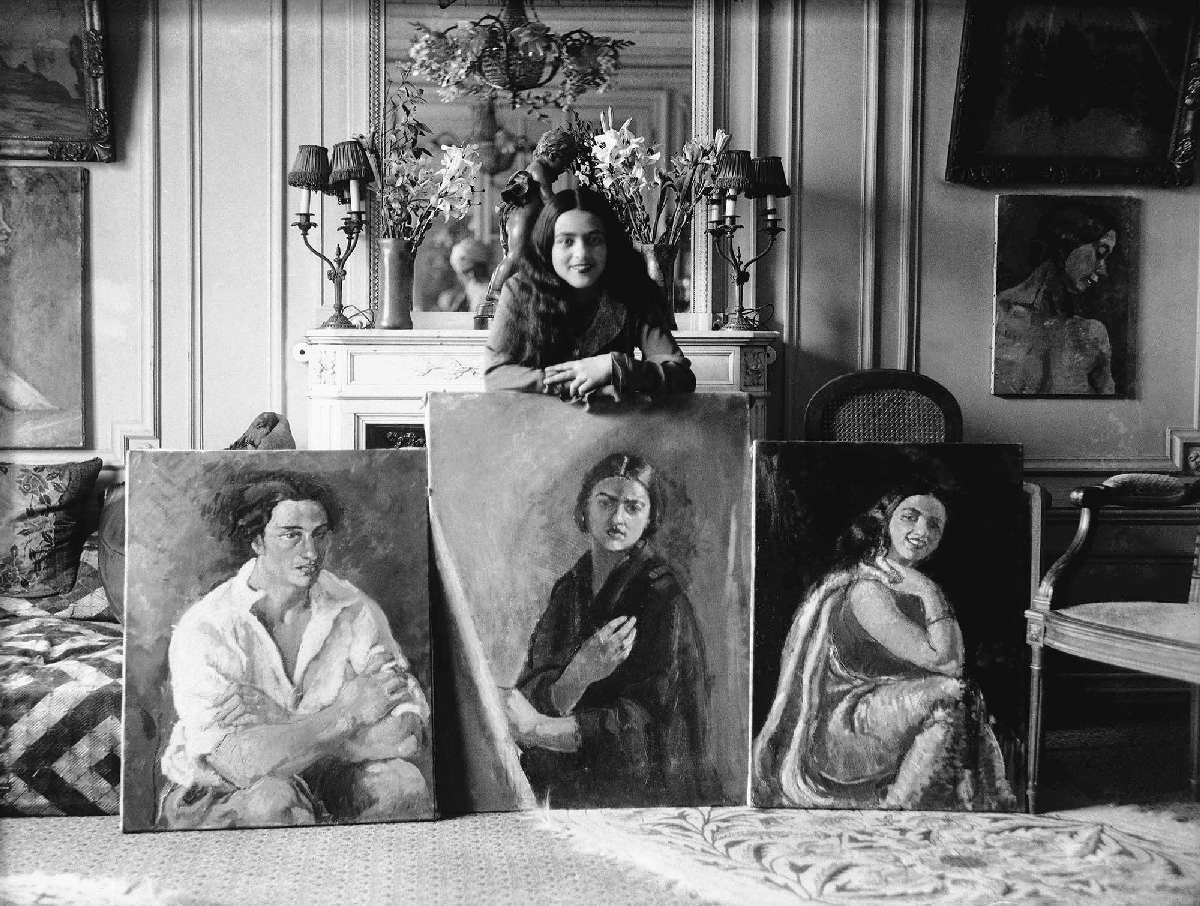
Amrita Sher-Gil: Banner exhibition
Fifty banners of the famous Hungarian-Indian painter, Amrita Sher-Gil are displayed at the Hungarian National Museum in a very special form until the end of July. The 150 by 150 cm banners, which contain paintings, photos and texts, are fastened to the fences of the museum.
The occassion for the exhibition is that (on the initiative of UNESCO) the world is celebrating the centenary of Amrita Sher-Gil's birth who was born in Budapest, 1913 and died in Lahor, British India in 1941.
The other occassion for the exhibition is that the uncle of the painter, the well-known Hungarian indologist, Ervin Baktay died 50 years ago. Ervin Baktay made several photos of her and the exhibition is supplemented by a selection of these photos and that of the photos of Amrita Sher-Gil's father, Umrao Singh Sher-Gil.
The exhibion has been organized by Hungarofest Non-profit Ltd., MMA and the Hungarian National Museum. It has been supported by MMA and was opened by MMA president, György Fekete on 21 June. At the opening ceremony His Excellency, Gauri Shankar Gupta, the Indian ambassador in Budapest and Tibor Gyula Dóka, managing director of Hungarofest were also present. The curator of the exhibition, Katalin Keserü gave a lecture on the art and life of the "Indian Frida Kahlo".
The exhibition is going to be seen in Balatonfüred and is planned to be shown in Paris too.
MMA is also organizing a two-day conference on Amrita Sher-Gil on 4-5 November, 2013.
Amrita Sher-Gil is regarded as one of the innovators of modern Indian painting. She became an iconic figure of the Indian struggle for independence and of women's art. Born from a Sikh aristocrat father and a Hungarian pianist mother, she spent her life in Hungary, Italy, France and India. In her art she merged the European post-impressionism, especially the work of Cezanne, Gauguin and Modigliani, with Indian painting. Most of her oeuvre is preserved in the National Gallery of Modern Art in New Delhi. Her first significant exhibition was made by Ernst Museum in Budapest in 2011, the curator was Katalin Keserü, who published a monograph on her in 2007.
The other occassion for the exhibition is that the uncle of the painter, the well-known Hungarian indologist, Ervin Baktay died 50 years ago. Ervin Baktay made several photos of her and the exhibition is supplemented by a selection of these photos and that of the photos of Amrita Sher-Gil's father, Umrao Singh Sher-Gil.
The exhibion has been organized by Hungarofest Non-profit Ltd., MMA and the Hungarian National Museum. It has been supported by MMA and was opened by MMA president, György Fekete on 21 June. At the opening ceremony His Excellency, Gauri Shankar Gupta, the Indian ambassador in Budapest and Tibor Gyula Dóka, managing director of Hungarofest were also present. The curator of the exhibition, Katalin Keserü gave a lecture on the art and life of the "Indian Frida Kahlo".
The exhibition is going to be seen in Balatonfüred and is planned to be shown in Paris too.
MMA is also organizing a two-day conference on Amrita Sher-Gil on 4-5 November, 2013.
Amrita Sher-Gil is regarded as one of the innovators of modern Indian painting. She became an iconic figure of the Indian struggle for independence and of women's art. Born from a Sikh aristocrat father and a Hungarian pianist mother, she spent her life in Hungary, Italy, France and India. In her art she merged the European post-impressionism, especially the work of Cezanne, Gauguin and Modigliani, with Indian painting. Most of her oeuvre is preserved in the National Gallery of Modern Art in New Delhi. Her first significant exhibition was made by Ernst Museum in Budapest in 2011, the curator was Katalin Keserü, who published a monograph on her in 2007.
June 24, 2013


















